Medici Money Read online
Page 12
Cosimo’s extension of his Church patronage beyond his own neighborhood and eventually all over town, the numerous depictions of Saints Cosma and Damiano, the raising of the Medici arms, the red balls on a golden field, in one sacred place after another—all this has been read, rightly no doubt, as the symbolism of political ambition. Certainly it caused resentment among those who felt their territory had been invaded, those exiles who lost their family chapels to members of the Medici clan.
The slow seeping of the sensual into sacred art, the more and more accurate depiction of the human form and the contemporary secular space, the growing physical beauty of the Madonna, the awareness of her breasts, her nipples even, the elegance of her long neck—all this has been understood as evidence of a new interest in everything earthly, a more positive humanist-inspired vision of our worldly lives. Rightly, no doubt. But there is more to it. There is magic.
What were the Magi if not magicians? They came to Jesus because that proximity was important to them. The gifts they brought had magical powers. Fourteen centuries later, the Florentines might be fascinated by money and material goods, but they hadn’t reached the dull point where matter is just matter, or where symbolism is merely an artistic convention whereby abstract qualities can be evoked through this or that image. No, for the people of Cosimo’s generation, a certain kind and color of dress, a particular hat, or a diamond ring still possessed powers that went beyond their being indicators of material wealth. Treated or processed in a certain way, material things could take on magical force. What was that rhinoceros horn doing in the Medici bank’s warehouse, if not waiting to be ground up in a magic potion? The bones of a dead saint were also alive with magic. Keep them close and they will work miracles. To show reverence, to encourage the miracle, you put them in an elaborate reliquary, a work of the finest craftsmanship, of Ghiberti, or Donatello. Art and magic call to each other.
But alas, saints’ bones are scarce. And rhinoceros horns even more so. When the great preacher, misogynist, and anti-Semite Bernardino di Siena died in 1444, the popular enthusiasm to possess some object that the charismatic man had touched left his poor donkey stripped of all those hairs that had rubbed the holy backside. Afterward, when the buying and selling began, how could you tell one donkey hair from another? How can you tell a real relic from a fake? The holy foreskin of our circumcised Lord is still held in one church in Italy. In 1352 the Florentine government had bought an arm of Santa Reparata from Naples, only to find it was made of wood and plaster.
But if you couldn’t find or afford the saint himself, the real thing, there was always his painted or sculpted likeness. The faithful kissed the saint’s stone feet, brushed his painted gown with theirs. They were close to him, through art. The banker Giovanni Rucellai had his tomb made in an exact likeness of the Holy Sepulchre. This mimicry could only make the passage to heaven easier. The copied image, that is, had a virtue that went beyond an aesthetic appreciation of the sensual world. It appropriated the qualities of its model. It served to create proximity to the sacred. The craftsmanship of the reliquary and the power of the relic were fused together in the fine fresco that showed, convincingly, the saints about their miracles.
Donatello’s reliquary bust of San Rossore (museum of S. Matteo, Pisa). Renaissance high art fuses with the miracle-working power of the saint’s remains.
Fortunately, Cosimo had an eye for the gifted artist, as he had a nose for the trusty bank manager. Donatello might be a sodomist, but who else could make you feel you were so close to the Divine in bas-relief? His reliquary bust of San Rossore was the man himself in bronze. Fra Filippo Lippi might be a fornicator, liar, and cheat, but how real your patron saints were when painted in pride of place either side of the pure Virgin in the Church of Santa Croce. Cosma, Cosimo. The proximity of those names had meaning (all branches of the Medici bank observed a holiday on September 27, St. Cosma’s Day). The cloak San Cosma wore in Lippi’s painting was the same crimson as Cosimo’s. He looked out at the devout viewer. The Virgin prayed for the saint, the saint for the viewer. Cosimo paid for prayers for the Florentines, prayers for his family, prayers for himself. Every day. The monks took the Medici bank’s money, lived with the paintings, and prayed. A magical community had been formed—real, virtual, metaphysical. Pay, pray. This was the early Renaissance. Pagare, pregare. Wealth, devotion, and technique reconciled in the sorcery of art. Money rehabilitated. Antonino and Cosimo could get on.
Or perhaps not. “I invoke God’s curse and mine on the introduction of possessions into this order.” The words appear on a scroll held by a saint in another of Fra Angelico’s depictions of the Virgin in San Marco, this time in a dormitory corridor where the only viewers would be the monks. Someone wasn’t happy. Cosimo had asked for the restriction on bequeathing money to the Dominican order to be lifted, but the monks were resisting. They hadn’t committed their lives to the severest of disciplines in order to grow rich. Was it right for a moneychanger to occupy such a position in their community? There was a sell-by date, it seemed, on much of what Cosimo did. Whether in the field of banking, or religious art, or politics, the magical balancing act, the expensive reconciliation of the irreconcilable, could last only so long.
IN 1438, HARD-PRESSED by the Turkish war machine, the leaders of the Eastern Church had come to Ferrara to see if they could resolve their doctrinal differences with the pope, accept his authority, and in return get help to raise the long siege of Constantinople. When Ferrara was hit by the plague, Cosimo took advantage to invite the Church leaders to Florence. Medici money brought the Orient to town, their strange clothes, their Greek manuscripts. Medici money paid for their lodgings, their food, their meeting places, as banking money today pays for so many well-meaning conferences.
Does the Holy Spirit proceed only from God the Father, as the Eastern Church maintained, or from both God the Father and God the Son, as Rome insisted? That was the issue under debate. It must have seemed child’s play to a man used to the stubborn complexities of international trade. Surely one just decided, this or that. And after months of bitter dispute, the priests did in fact agree that Rome was right. Christendom rejoiced. Cosimo had played his part in resolving the schism that was the shame of every believer. But back in Constantinople, the Greek holy men were told they had exceeded their mandate, they had conceded too much, they had merely accepted the authority of the pope. The pact broke down. Even at the expense of annihilation, the Greeks didn’t want to accept that they had got it wrong about the Holy Spirit. And if they persisted in such grave errors, Western Christendom could hardly be blamed if it left their eastern cousins alone against the mighty Turk. Even the most pious of bankers could do nothing about such determined integrity.
And there was very little Cosimo could do when the company of Giovanni Venturi and Riccardo Davanzati failed in Barcelona in 1447. Venturi & Davanzati, one of many Italian trading companies in Spain, had played a critical part in the process by which the Medici bank sought to keep money circulating among its various branches. The Barcelona company bought cloth from the Bruges branch of the Medici bank. The money it owed Bruges was then held in the Spanish city, to be drawn on by the Venice branch of the Medici bank to honor letters of credit issued to Venetian merchants who were importing saffron and Spanish wool. The merchant handed in his money to the Medici branch in Venice and Venturi & Davanzati paid it out to his suppliers in Barcelona. In this way, Bruges reduced its debt with Venice and with Italy in general.
But in the summer of 1447, the Spanish company was unable to honor 8,500 florins’ worth of letters of credit. The Venetian merchants demanded their money back from the Medici. Bruges was left without payment for vast quantities of cloth and above all without a way of returning money to Italy. With the elaborate system of triangular trading on which the Medici bank depended becoming ever more precarious, the only solution now seemed to be to encourage Henry VI of England to accept loans in return for which he would allow the Medici to increase the amoun
t of wool they were buying and sending to Italy. The loans would be repaid by exempting the Medici from export duties on whatever they bought.
It was a dangerous and expensive way of bringing money back to Italy, since it involved the constant concession of large amounts of credit. Medici managers set off for Contisgualdo (the Cots-wolds) to watch the sheep shearing, then down to Antona (Southampton) to arrange for transport. With the monopoly of their own trade organization bypassed, the English wool merchants were furious. And many of the Florentine monks were likewise getting increasingly irritated about the number of bankers appearing in sacred paintings and demanding pride of place in their prayers. It seemed the more money you spent on those who wished to stay pure and poor, the greater the possibility of a fundamentalist backlash. Everywhere tension was building. In 1452 Girolamo Savonarola was born. Less than half a century hence, this fiery preacher would be running Florence and the Medici would have fled. Albeit briefly, the city of God would replace the Medici regime. In the political field as elsewhere, Cosimo’s solutions always had a precarious feel about them.
THERE WAS A question that from time to time would form on the lips of the Florentine ruling elite: Should we admit such and such a person—a foreigner, an ambassador, a vulgar self-made man—into “the secret things of our town”? But surely, you object, in an open republic with a written constitution, there are no secrets, aside from military matters. What was this about?
On return from exile in 1434, Cosimo held no institutional position. He was a private citizen whose sentence had been revoked. He was the head of a triumphant faction taking power from another. Factions were illegal. The government, as we have seen, was elected by lot: at the top the signoria, which is to say eight priors and the gonfaloniere della giustizia. They proposed all legislation and held the powers of chief magistrates. Then the advisory bodies of the Sixteen Standard Bearers and the Twelve Good Men; then the Council of the People and the Council of the Commune, whose one power, but considerable, was that of a veto on legislation proposed.
What did Cosimo have to do with all this? What more could he be than another name in the leather bags from which, at staggered intervals, the podestà—a sort of mayor with no political power, usually a man from out of town—would select the members of the various government institutions, at random? The names in the bags were determined by a “scrutiny” held once every five years that assessed the male population on such criteria as age, wealth, family, guild membership, criminal record. On ousting the Medici in 1433, the Albizzi had held an unscheduled scrutiny to have the right sort of names put in the bags. Their great mistake had been not to eliminate the names of the previous scrutiny but merely to add new ones. Thus, with bad luck, it had happened that a pro-Medici signoria had been picked.
Whenever the process of government was stalled, when the priors kept proposing as essential something the councils repeatedly vetoed as nefarious, then, as we recall, a parliament was called. The people flocked into the Piazza della Signoria and were bullied into conceding draconian powers. One says, “flocked,” but in this archive-obsessed state, no accurate record was kept of the numbers of people in the piazza for a parliament. Nor of the way the vote split. It didn’t split. This was an exercise of pure power, thinly dressed as democracy.
Why did the priors not call a parliament more often? Because the democratic rags were so very thin that not only did they fool no one, they didn’t even allow people to pretend that they had been fooled. It had become important for the Florentines, as it is important for us today, to imagine that they shared, as equals, in a process of collective self-government. Should this patently not be the case for any extended period of time, then rebellion became legitimate. But as with the question, When is an exchange deal a loan with interest? or again, When is church patronage an expression of secular power? appearances, perceptions, definitions, and above all words were of the utmost importance. A coup d’état, for example, is called a parliament.
“The secret things of our town.” The Florentines used the expression frequently, understood what it meant, and did not clarify. They did not clarify because they were referring to the embarrassing gap between the way things were supposed to be done and the way they were really done.
COSIMO RETURNS FROM exile. A parliament is held. It ratifies the formation of a balia, a large council that wields unlimited powers for a limited period. This is a wonderful equivocation. Unlimited power for a day can cast its shadow years hence. They could execute you. The balia confirms the sentences of those members of the Albizzi clan who have been exiled and announces more sentences. It invalidates the pro-Albizzi scrutiny of 1433 and orders the name tags it produced to be burned. It appoints a group of so-called accoppiatori to make a new scrutiny. Accoppiatore means “he who brings together”—he, that is, who couples the right names with the right bags, for some people will be suitable for serving on the Council of the Commune but not on the powerful otto di guardia, the commission of eight police chiefs. Some will be equipped for sitting on the city’s public debt commission, but not for being governor of Pisa or Volterra.
Question: How can the priors, the signoria, be elected while the complex procedure of reviewing the whole male population to make the new scrutiny is carried out? Answer: The accoppiatori—Cosimo’s inner circle—will stick just ten names, from Cosimo’s inner and outer circle, into each election bag and the podestà will draw the government from those. This procedure, the balia ruled, was to last just a few months; accoppiatore is a temporary appointment. But the deadline for completing the scrutiny was put back—first to April 1435, then June, then October, then November, then March 1436. All in all, it was proving much easier to deal with a handful of names than with thousands.
In June 1436, the scrutiny is finally ready but the Councils of the People and of the Commune are persuaded to pass, by a single vote, a law that allows the priors to extend, for a year at a time, the right of the accoppiatori to prepare electoral bags with just ten names. And they do. For one year. Then another. It seems these shady civil servants have a regular job. Accoppiatore was beginning to take on the meaning “fixer.” The priors extended their powers for a third year, at which point it was almost time for another scrutiny, though the names of the previous one have never really been used. But now there is a war on, and government finances are in desperate straits. This is not a time for the divisive business of scrutinizing the population and deciding who has a right to do what. Solidarity is at a premium. Month by month, election after fixed election, the podestà’s extractions of the priors’ names are recorded in the city archives exactly as they always were since the constitution was first written. It is important to understand that all this is perfectly legal.
With uncanny good luck, Cosimo is elected gonfaloniere della giustizia, head of government, first immediately after his return from exile, then precisely as the heads of the Eastern Church arrive in Florence for their famous council of 1439, then again at a particularly tense moment in 1445. In short, he knows how to have his name pulled from the bag when it matters. But for the most part, Cosimo is careful to keep in the background, never to make a display of his unconstitutional power. “He mixed power with grace,” Machiavelli tells us in his Florentine Histories. “He covered it over with decency.” “And whenever he wished to achieve anything,” says Vespasiano da Bisticci, “to avoid envy he gave the impression, as far as was possible, that it was they who had suggested the thing, not he.”
Of course what the majority of people are suggesting to Cosimo is what kind of state or bank appointment they or their sons and grandsons and nephews would like to have. Begging letters pour in for positions that are supposedly chosen by lot. Cosimo does his best. But you can’t please everyone. The Councils of the People and of the Commune are not happy. Is this Florentine republicanism? After the Battle of Anghiari in 1440, the defeat of Milanese troops and the consequent elimination of the Albizzi threat to the regime, the pressure of public opinion is such that
the traditional system of truly random elections has to be restored.
But only for three years. In 1444 the ten-year sentence of exile on Cosimo’s enemies is coming to an end. To have seventy old enemies return at once would be dangerous. So the councils are bullied into accepting a balia, thus once again temporarily conceding unlimited powers. The sentences of exile are extended for a further ten years. The electoral “experiments” resume.
In 1447 Visconti dies. With wonderful caprice, the duke bequeaths his title to Milan and all its territories not to Francesco Sforza, now married to his bastard daughter Bianca, but to Alfonso of Aragon, who had become king of Naples on defeating the Angevin family in 1442. Since the idea that the king of Naples in the extreme south should also possess Milan five hundred miles away in the far north was unthinkable to everybody except the man himself, the only possible reason for Visconti’s doing this must have been to cause a maximum of confusion and resentment. And in fact, the people of Milan immediately reject the duke’s will, rebel, and form a republic. The city’s many subject towns take the opportunity of the ensuing power vacuum to declare independence. The Neapolitans march north into Tuscany with the intention of taking what is “legally” theirs. The Venetians march west toward Milan to capitalize on the chaos. Furious, Francesco Sforza, who feels cheated out of his inheritance, joins the new republic in the fight to recapture its subject territories (and revenues) but then starts to claim them for himself whenever he is victorious.
Lombardy fragments. Over the next two years, all the major players will change sides at least once. So it is easy for the Medici regime to go on insisting that this is no time for erratic, randomly chosen governments. “The power of the accoppiatori was instituted to preserve the independence of Florence,” Cosimo declares. Meantime, two questions obsess the endless consultative bodies (Cosimo’s allies) poring over the electoral issue. First: Is a return to the constitutional system of random election ultimately inevitable to placate public opinion and republican sentiment? Second: If it is inevitable, can the reggimento, the status quo, somehow be guaranteed? “The greatest attention must be paid to the technical aspects,” announces Cosimo to one meeting. Whenever, in a democracy, we see our rulers obsessed with “the technical aspects” of the electoral process, whenever we see them tinkering with the size of constituencies, or machinery for counting ballots, then we know we are getting close to “the secret things of our town,” the gap between respectable appearance and brutal reality. It would be rare for a banker not to be present.

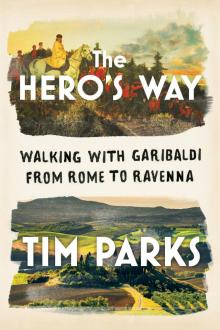 The Hero's Way
The Hero's Way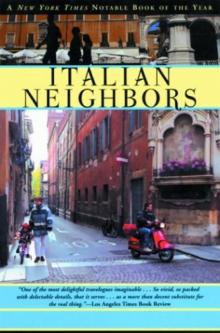 Italian Neighbors
Italian Neighbors Goodness
Goodness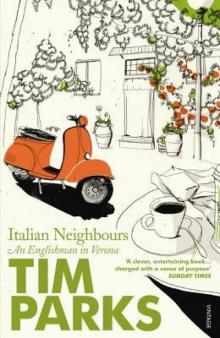 Italian Neighbours_An Englishman in Verona
Italian Neighbours_An Englishman in Verona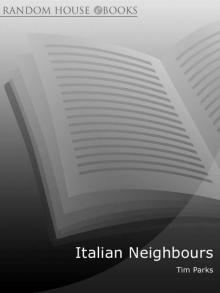 Italian Neighbours
Italian Neighbours Juggling the Stars
Juggling the Stars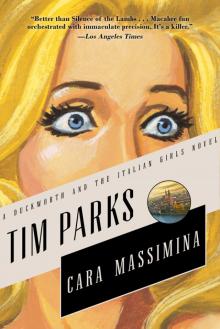 Cara Massimina
Cara Massimina Cleaver
Cleaver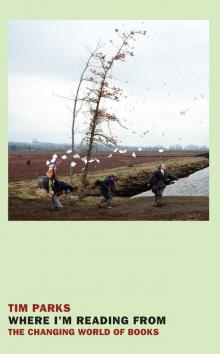 Where I'm Reading From
Where I'm Reading From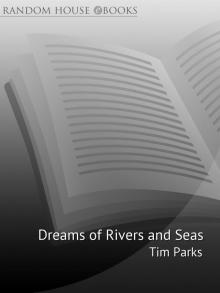 Dreams of Rivers and Seas
Dreams of Rivers and Seas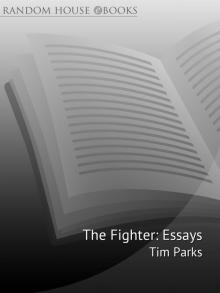 The Fighter
The Fighter In Extremis
In Extremis Painting Death
Painting Death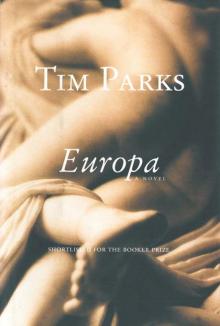 Europa
Europa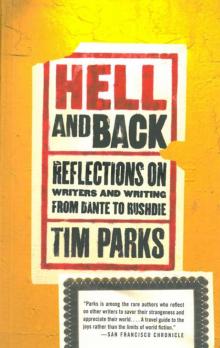 Hell and Back
Hell and Back Judge Savage
Judge Savage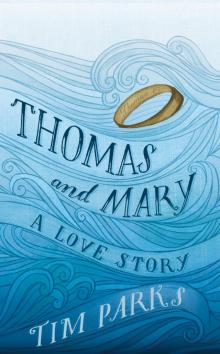 Thomas and Mary
Thomas and Mary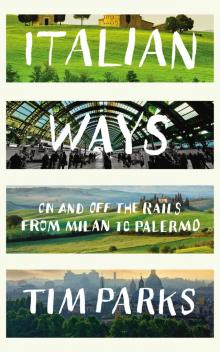 Italian Ways
Italian Ways Rapids
Rapids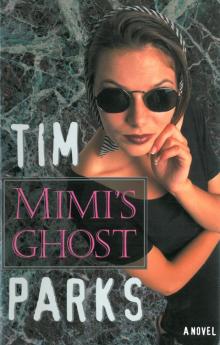 Mimi's Ghost
Mimi's Ghost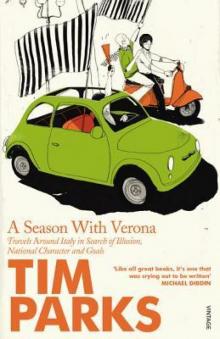 A Season With Verona
A Season With Verona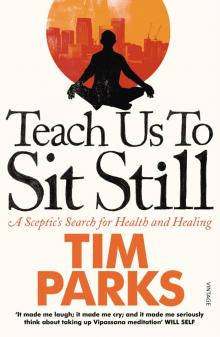 Teach Us to Sit Still
Teach Us to Sit Still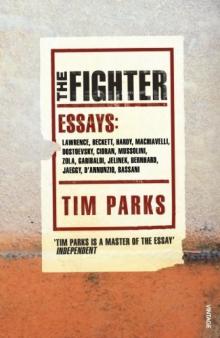 The Fighter_Literary Essays
The Fighter_Literary Essays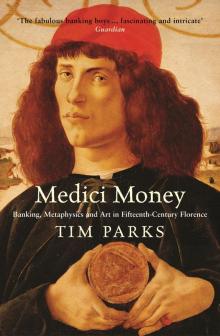 Medici Money
Medici Money